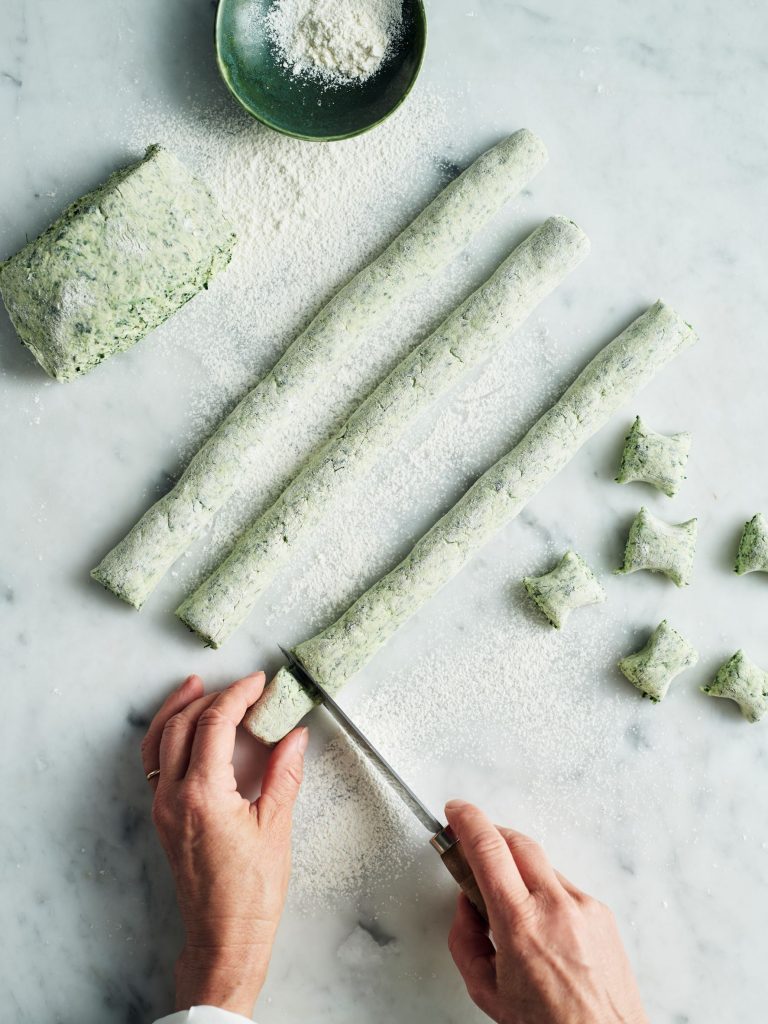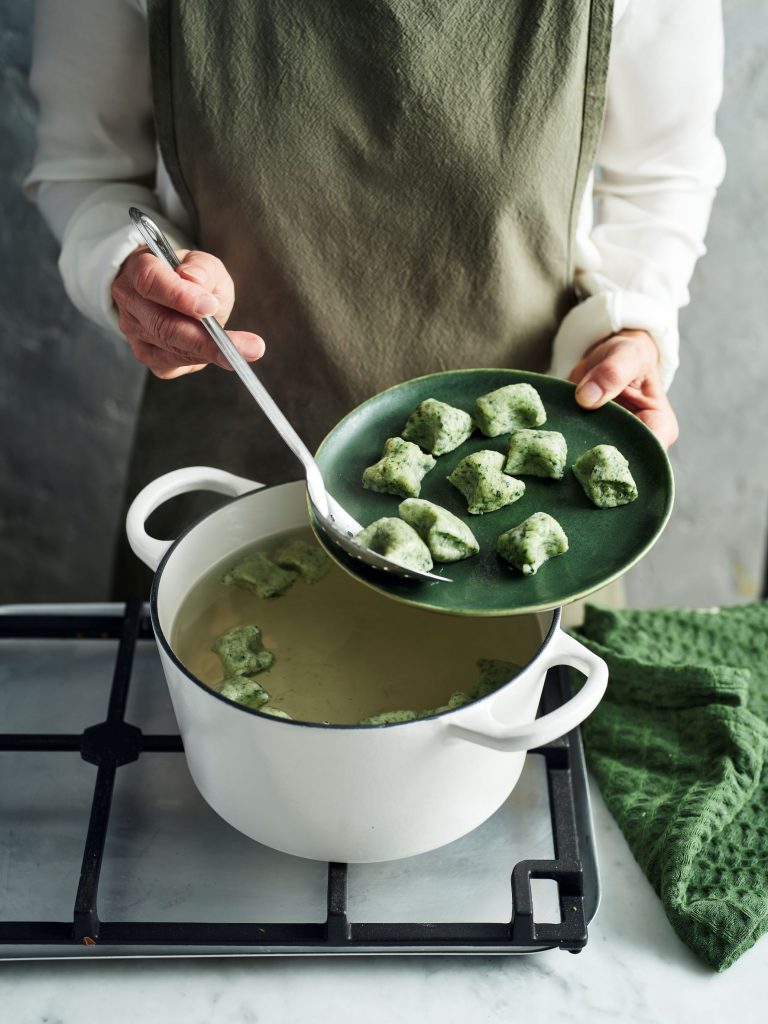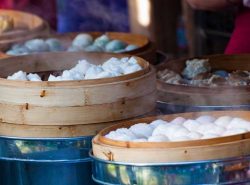Gourmet Traveller’s gnudi with brown butter recipe
05.04.22

Simple to prepare, these spinach and ricotta dumplings are a quick and delicious alternative to gnocchi. Gnudi translates to “naked” and refers to the mixture, which is like the filling of ravioli without any clothes (pasta). Dress them up with marjoram, pine nuts and golden burnt butter. Delizioso!
20 MINS PREPARATION // 5 MINS COOKING // SERVES 4
INGREDIENTS
100gm baby spinach
500gm firm ricotta
40gm finely grated parmesan, plus extra to serve
1 egg
2 tbsp finely chopped dill
½ tsp salt
½ tsp ground nutmeg
¾ tsp dried mint
Black pepper
200gm plain flour, plus extra for dusting (1⅓ cups)
125gm unsalted butter
½ cup marjoram leaves (loosely packed)
Roasted pine nuts

Step 2 
Step 3 
Step 4
METHOD
1 For gnudi, wilt just-rinsed baby spinach in a large, dry frying pan over high heat (30 seconds to 1 minute). Transfer to a sieve and press out any excess moisture, then pulse in a food processor until coarsely chopped.
2 Add ricotta, parmesan, egg, dill, salt, nutmeg and dried mint, season with freshly ground black pepper and process to combine. Transfer to a bowl, gently mix in plain flour until dough just comes together.
3 Tip out onto a lightly floured surface and knead lightly until smooth. Divide into thirds, roll each piece to a 1.5cm diameter rope, about 60cm long, cut into 2cm lengths and gently squeeze in centres.
4 Cook gnudi, in batches, in a large saucepan of gently boiling salted water until they rise to the surface (2-3 minutes). Transfer with a slotted spoon to a tray; drain excess water well.
5 Meanwhile, heat unsalted butter in a frying pan over medium-high heat until nut brown (3-4 minutes). Add gnudi and toss until starting to brown lightly. Remove from heat, stir in marjoram leaves and season to taste. Serve with extra parmesan and scatter with roasted pine nuts and extra marjoram leaves.
Substitute
If you have any spare leafy greens lying around, don’t hesitate to use them. Silverbeet, cavolo nero and kale work just as well as spinach.
TIPS
When adding the flour, make sure the dough is both smooth and just a little sticky at the same time. Be wary of over-working, which can activate the gluten, resulting in rubbery lumps. Test the gnudi mixture at this stage. Pinch a walnut-sized piece of dough and drop it into a saucepan of salted simmering water. If the gnudi disintegrates, you’ll need to add a little more flour to the mixture – crisis averted. Ideally, it should float to the surface, at which point you should remove it and taste it. If it’s too floury, it may need another 5-10 seconds of cooking.
Recipe and images: Gourmet Traveller magazine
Consumer Marketing
Latest posts by Consumer Marketing (see all)
- The Spice Issue - July 12, 2022
- Winter dining destinations - July 12, 2022
- Gourmet Traveller’s harissa roast lamb recipe - July 12, 2022
Popular Articles
06.12.17
A Guide to Sydney’s Cultural Food Suburbs
Sprawling Sydney is home to many diverse suburban pockets where specific cultural communities thrive. Food plays a big part in these hubs – a stroll th...
07.09.17
Edible seaweed guide
With its complexity in flavour and texture, seaweed is the culinary trend taking diners' palates to another dimension, here's a guide to some of what you m...
14.12.17
A Guide to Melbourne’s Cultural Food Hubs
Melbourne is one of Australia’s most culturally diverse cities. In fact, a quarter of its 4.3 million inhabitants were born overseas.This rich mult...



